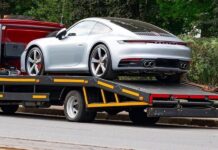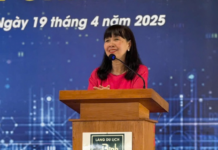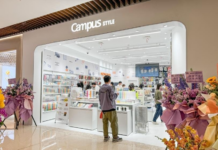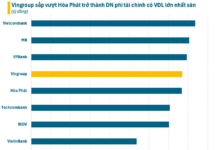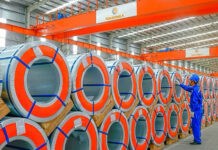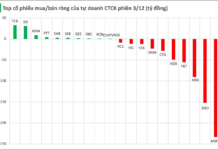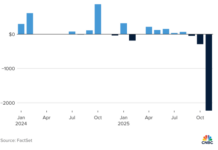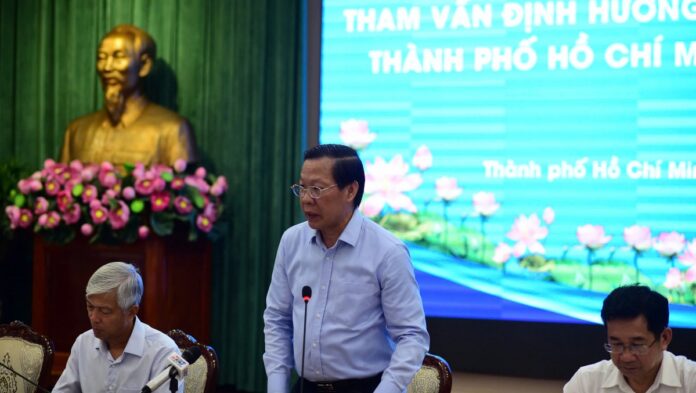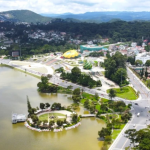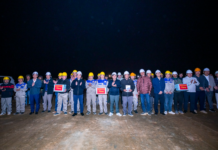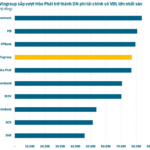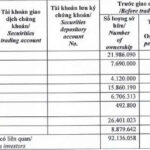On August 24, Ho Chi Minh City People’s Committee organized a workshop to consult experts on the orientation of the city’s socio-economic development for the period of 2026-2030.
Pushing the Boundaries of Thought
Chairman of the Ho Chi Minh City People’s Committee, Phan Van Mai, shared that the workshop aimed to gather expert opinions to contribute to the socio-economic development plan for the upcoming 12th Party Congress of the city, for the term 2025-2030. Although the city already had a first draft, this workshop was considered a starting point to truly “unleash” the potential of thoughts and aspirations for the city’s development by 2030 and beyond.
Based on the discussions and inputs from the experts, the workshop would clarify issues and select key points to be incorporated into two crucial documents that will guide the city’s development: the Socio-Economic Development Plan for Ho Chi Minh City towards 2030 and the Political Report of the City Party Committee.
Mr. Phan Van Mai also requested that the opinions focus on thoroughly studying Resolution 31 of the Politburo on the orientation and tasks for the development of Ho Chi Minh City towards 2030, with a vision towards 2045.
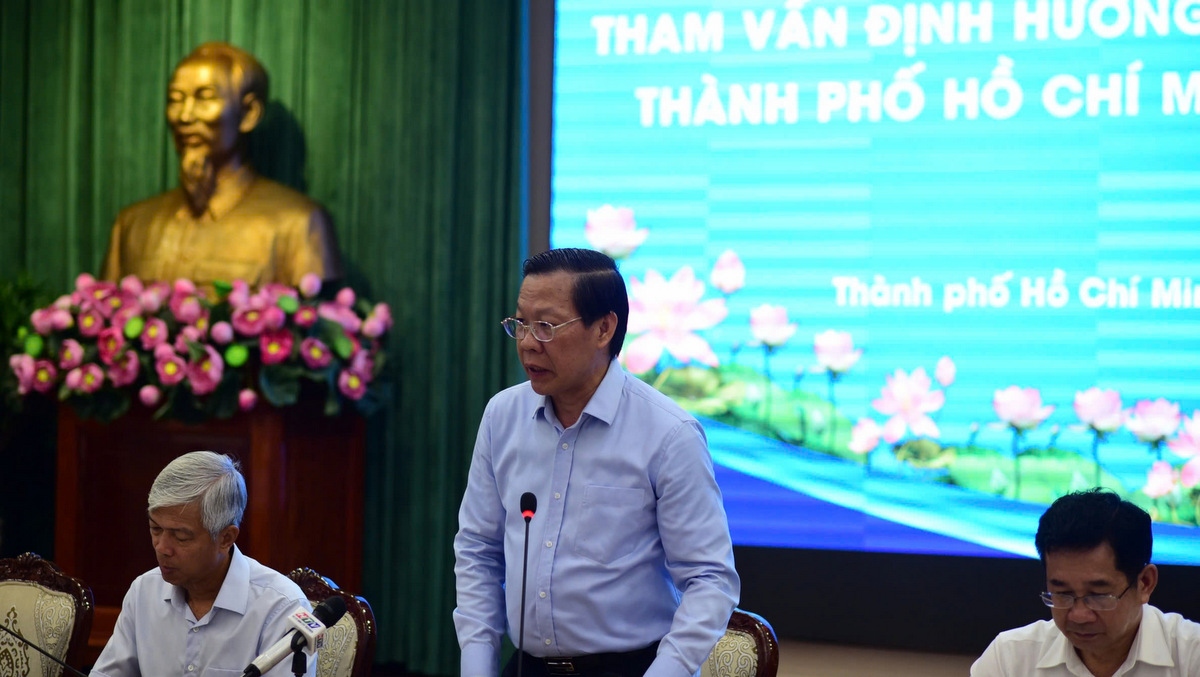
Chairman Phan Van Mai of the Ho Chi Minh City People’s Committee delivers his remarks (Photo by Ha An)
According to Resolution 31, the goal by 2030 is for Ho Chi Minh City to become a civilized, modern, compassionate, dynamic, and innovative city with a high-quality workforce. It is essential to define what the city needs to do to achieve these goals and the level of achievement expected. For instance, within the context of “civilized and modern,” there should be quantitative targets, which will then inform the formulation of key tasks and solutions.
As assessed by organizations, experts, and researchers, Vietnam has a decade left to decide whether it will overcome the middle-income trap or remain “stuck” at the lower level.
Therefore, Mr. Phan Van Mai believes that Ho Chi Minh City needs to identify the bottlenecks and critical issues to overcome the middle-income trap during this period and contribute to the country’s escape from the middle-income trap:
“We need to identify these strategic bottlenecks or focus on the fundamental aspects so that the city can contribute to the nation’s progress. We must solve the equation of escaping the middle-income trap and continue our development,” said Mr. Phan Van Mai.
Leveraging Budgetary Funds to Attract Social Investment
Contributing to the workshop, Dr. Tran Du Lich, Chairman of the Advisory Council for the Implementation of Resolution 98 of the National Assembly, suggested that the city’s development equation for the period of 2026-2030 should be based on three key perspectives: “Seizing Opportunities – Tapping Resources – Achieving Rapid and Sustainable Growth.”
According to Dr. Tran Du Lich, during the period of 2026-2035, Ho Chi Minh City, along with the entire country, needs to take advantage of its young workforce before entering the stage of an aging population. Another opportunity lies in Vietnam’s status as a peaceful country in a world filled with uncertainties, as well as its potential in the context of the Fourth Industrial Revolution, especially in high-tech industries such as software and semiconductor chips.
Dr. Tran Du Lich proposed that Ho Chi Minh City focus on addressing the long-standing bottlenecks of “institutions and transport infrastructure.” The city should work simultaneously on developing new urban areas and renovating old ones. In terms of urban renovation and development, there should be a focus on addressing housing along and around canals and improving living conditions in deep alleys that lack safety and adequate living space.
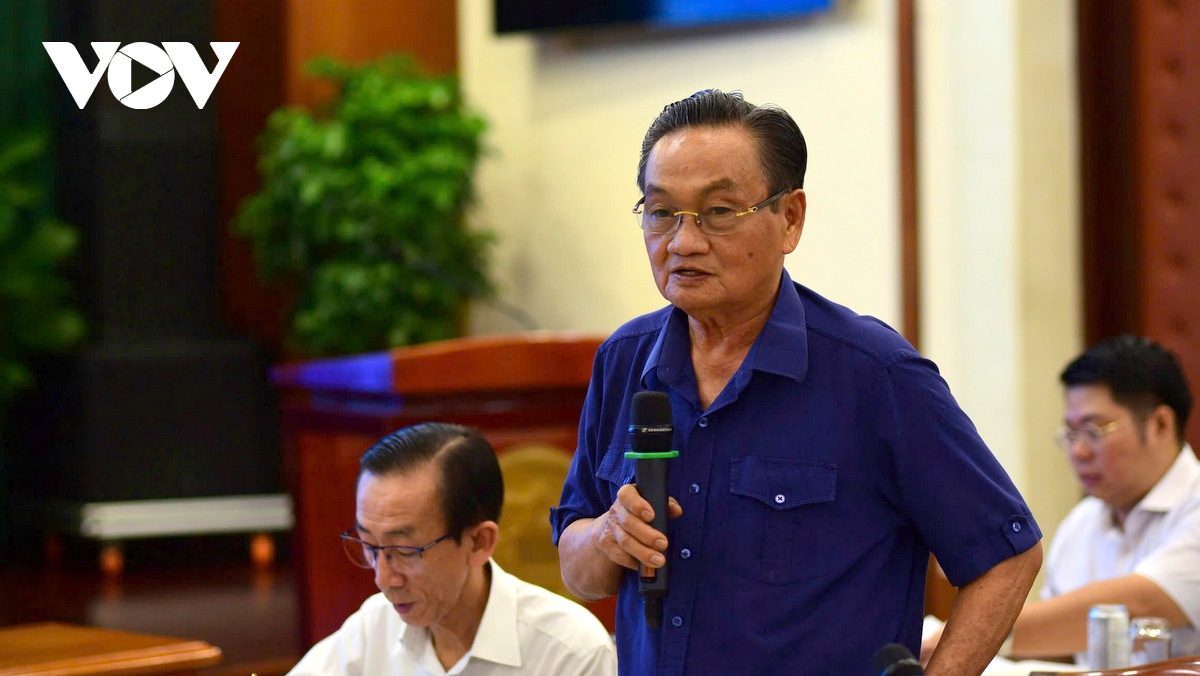
Dr. Tran Du Lich, Chairman of the Advisory Council for the Implementation of Resolution 98 of the National Assembly (Photo by Ha An)
Additionally, there is a need for a special mechanism to accelerate investment in urban infrastructure, with a focus on constructing 183 kilometers of urban railways over the next ten years (2026-2035). It is also crucial to complete the institutional management model towards an effective and efficient urban governance system. The city should strive to replicate the achievements of the 2006-2010 period, where every budget dollar could leverage ten dollars of social investment.
“We must renew our thinking and approach this with a different equation, a different mindset, and a different way of doing things if we want the city to develop and achieve its goals by 2045. If we continue with the old ways of thinking and doing things, we will not be able to succeed,” asserted Dr. Tran Du Lich.
Dalat City and 4 districts to be merged into one city, with expanded area 4 times the current size.
The city of Dalat and 4 districts will be reorganized into 1 city and 1 district; merging 5 communes into the city of Bao Loc to expand the urban space of this city.



